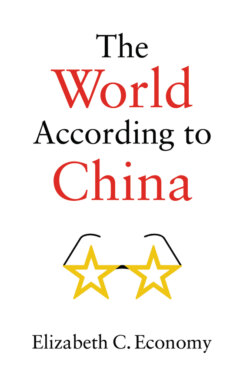Читать книгу The World According to China - Elizabeth C. Economy - Страница 12
A Period of Strategic Opportunity
ОглавлениеFor Chinese leaders, the second stage of the pandemic represented what they like to refer to as a “period of strategic opportunity.” Xi managed to use the pandemic to make progress on several health-related priorities, most notably bolstering his still nascent Health Silk Road (HSR), an offshoot of his 2013 grand-scale global infrastructure plan “One Belt, One Road” (later translated as the Belt and Road Initiative or BRI).40 Thirty countries, as well as the WHO and UN Programme on HIV/AIDS, had previously signed memoranda of understanding as HSR partners;41 now China was sending them doctors, medical devices, and technology, such as contact-tracing capabilities and e-medicine.42 In a March phone call with then Italian prime minister Giuseppe Conte, Xi Jinping stated, “Italy and China are the cornerstones of the new Silk Road of Health,”43 and he sent 300 doctors to Italy to cement the partnership. Foreign Minister Luigi Di Maio criticized Europe for providing less assistance than China,44 although not all Italians agreed with his assessment. As one Italian observer noted, China’s aid was provided primarily as part of a commercial deal, whereas European assistance was “more substantial” and arrived in the form of donations.45
In addition, Xi seized the opportunity presented by the pandemic to promote traditional Chinese medicine (TCM). Xi had long supported TCM, describing it as “the treasure of ancient Chinese science and the key to the archive of Chinese civilization.”46 TCM is both lucrative – with a global market value of more than $400 billion – and an important source of potential Chinese cultural or soft power influence. Early in his tenure, Xi set targets for the production and use of TCM within China, established TCM centers, programs, and workshops in several African and other countries,47 and worked with Margaret Chan, a former Hong Kong health official and WHO head, to develop and release a 10-year strategy to integrate TCM into the world’s healthcare systems. (The plan called for countries to educate their citizens on TCM’s benefits and ensure that insurance companies provided reimbursement for TCM.)48 In 2019 – over the objection of much of the international scientific community – the WHO agreed to include TCM in its International Classification of Diseases (a document that validates certain treatments and medicines for doctors to diagnose patients) without subjecting TCM practices to the same rigorous testing demanded of Western treatments.49 This provided TCM with an invaluable official seal of approval.
Despite limited medical evidence as to the benefits of TCM for treating COVID-19, Xi instructed Chinese hospitals to prescribe it as part of their COVID-19 treatment protocol.50 He also pushed the distribution of TCM and TCM medical specialists through the HSR and advertised its usefulness in pandemic treatment on Chinese embassy websites. At the same time, Chinese-based international professional associations lobbied the United Nations to formally recognize the value of TCM in responding to COVID-19.51
